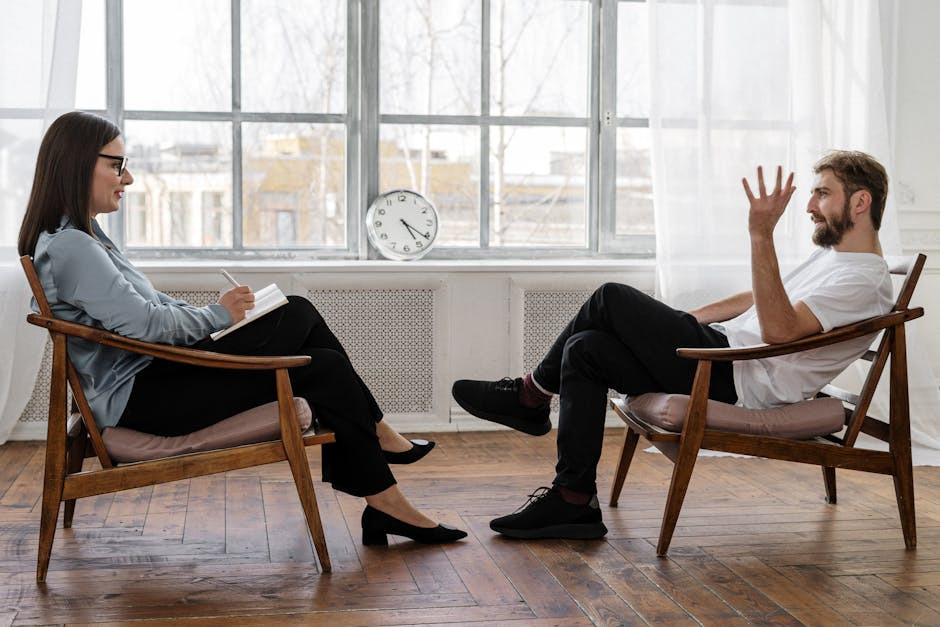Art and music are both powerful things that are associated with many great mental health benefits. The healing power connected to art and music has been studied for many years. In ancient Egypt, many people believed that music had divine origins that could help restore harmony between the body and the mind. Art was also considered a therapeutic tool used in everything from cultural traditions to medical practices.
Today, both art and music are used as a type of therapy intended to help treat a wide variety of mental, physical, and emotional conditions. Art and music therapy can help to effectively relieve anxiety and depression and even aid in processing grief and trauma. These types of therapies can provide a great means of self-expression, especially for those who may be in the process of reconnecting with their identities. Art and music therapy can also play a key role in treating addiction.
At Profound Treatment in Los Angeles, California, we recognize that everyone heals in different ways. Thus, access to new and more holistic forms of treatment is very important. Art and music therapy can be used alongside more traditional forms of treatment to help maximize results. These are just some of the many holistic treatment methods that we utilize at our facility.
What Are Art Therapy and Music Therapy?
Music therapy involves using different elements of music to accomplish a particular goal. This could be listening to music, writing music, or playing a certain instrument. Music therapy can be used to relieve pain or stress and promote relaxation. Some of the primary conditions that music therapy can be used to treat include:
- Anxiety
- Depression
- Developmental disorders
- Post-traumatic stress disorder (PTSD)
- Schizophrenia
- Obsessive-compulsive disorder (OCD)
- Dementia
- Traumatic brain injury
- Parkinson’s Disease
Art therapy is very similar to music therapy in the sense that it is flexible and can be used in many different ways. For example, it may involve looking at art that someone else created and discussing what emotions may be associated with it. It could also involve an individual creating art of their own as a means of self-expression or stress relief. Engaging in this creative process can help people explore different emotions they may be experiencing, develop new coping mechanisms for stress, and improve their overall health and well-being.
Art therapy can be used to treat many of the same conditions that music therapy is used for. This includes everything from mental health disorders like anxiety and depression to developmental and learning disorders like autism spectrum disorder (ASD) or attention-deficit/hyperactivity disorder (ADHD). It can be especially useful for those who are in the process of healing from past trauma. For example, this could include those who have experienced sexual assault or some form of domestic violence.
What Are the Benefits of Using Art and Music as Types of Therapy?
There are many benefits associated with using art and music as types of therapy alongside other more traditional forms of treatment. Both are extremely versatile and can be utilized in many different ways. There is no right or wrong way to utilize these types of therapies; it is all about what works effectively for the individual. A therapist can work with an individual to try out different techniques to discover what is most effective for them.
Another key benefit of both art and music therapy is that anyone who desires to is able to participate. You don’t have to have a background in art or music to experience the many benefits that both of these types of therapies have to offer. Anyone of any skill level can participate. This includes everyone from young children to the elderly.
Other key benefits associated with both art and music therapy include:
- Stress reduction
- Improved emotional regulation
- Physical rehabilitation
- Improved cognitive functioning
- Motor skills development
- Better emotional resilience and coping skills
- Improved self-esteem and overall confidence
- Pain and symptom management
- Trauma processing
- Emotional healing
- Improved social and communication skills
How Can Art and Music Aid in Self-Expression?
Art and music can also both play important roles in allowing for better self-expression. Many people who experience trauma have difficulty putting what they experienced into words. However, with both art and music, they are able to communicate how they are feeling in a non-verbal way. This can allow them to avoid reliving their past trauma and the triggers associated with it.
In the case of music therapy, this could involve using melody or rhythm to channel complex emotions like grief or anger. Everything from composing the music to writing the lyrics can play a role in self-expression. These are emotions that are difficult, if not impossible, to put into words. However, by expressing them through music, the individual can experience a type of release and may be better able to process how they are feeling.
With art therapy, the process can follow a similar form. It could involve drawing, painting, sculpture, collage, photography, or coloring to express emotions that are difficult to articulate. Elements like the colors an individual chooses to use and shapes and forms can all help to convey emotions that would be too painful or too difficult to put into words.
Both music and art therapy can also be great ways for a person to better connect with their identity. By exploring new ideas and using different kinds of techniques and themes, the individual can discover what they connect to the best. With art, an individual may choose to use symbolism to reflect who they view themselves to be. In the case of music, it could be the genre, lyrics, or tempo that allows a person to reflect upon who they are.
When an individual experiences a traumatic event, it is normal to feel as if they have lost a piece of who they are as a person. Art and music therapy offers a way for them to rediscover their identity and who they want to be.
How Can Art and Music Be Used to Process Trauma?
When it comes to treating someone who has experienced trauma, many techniques involve asking the individual to discuss what they went through. This is the case with talk therapy as well as other traditional treatment methods. This can play a key role in getting to the root of the issue, identifying emotions associated with the trauma, and promoting healing. However, this can also be painful and challenging for the individual.
Many people who experience trauma, especially at a young age, do not have the coping skills necessary to deal with it. Thus, they may choose to bury the memories of what they experienced for as long as possible and attempt to pretend like it never happened. This can go on for years and even decades. However, ultimately, the pain and trauma will still be there, and it is necessary to uncover it in order to deal with it.
For many people, it is deeply uncomfortable and painful to discuss past trauma out loud, even after a significant period of time may have passed. It may also be difficult to articulate what they experienced and how they feel about it. Both art and music therapy offer alternative ways to explore the complex emotions connected to trauma. This can be a much more comfortable form of treatment for the individual that does not involve traumatizing them further.
Art and music therapy can be used to access emotions connected to the trauma that the individual might not even recognize they have. It can also be used to release repressed thoughts and access the subconscious. Both art and music provide safe platforms for individuals to share what they have experienced and connect with others in the process. This can help dispel some of the isolation that is often connected to experiencing trauma.
Finally, both art and music therapy can help restore a sense of control for the survivor. Many people who experience trauma feel as if their sense of safety and control were stolen from them. This could be from the event itself or even the individual responsible. Through art and music, the individual can reclaim their sense of control and, in the process, their self-confidence.
How Can Art and Music Be Used to Process Grief?
Like trauma, grief is a complicated emotion that can be difficult to articulate. It is also often changing, especially in the weeks and months following a great loss. For example, one day, an individual may feel as if they are finally turning the corner and feeling better. However, the next day, they may wake up and feel like they are starting over and coming to terms with what happened.
Grief is also a personal experience and many people may not feel comfortable opening up about what they’re experiencing with other people. Maybe they fear they won’t be understood or that they will be judged for where they are in the grieving process. Art and music allow the individual to process and express how they are feeling without using words. This can not only provide an emotional release but can help aid in the healing journey.
Music and art can also offer many great ways to find meaning in loss or create something good out of an otherwise devastating situation. For example, this could be writing a song to pay tribute to a person who passed away. Or it could involve creating a collage using pictures of past memories they may have with the lost loved one. This can be a great way to celebrate the individual while also mourning their loss.
Finally, both art and music offer a healthy outlet for those processing pain. For some people experiencing a great loss, their first instinct may be to turn to substance misuse to cope with the pain. However, this can lead to addiction and many other serious problems. It can also be a way of repressing pain instead of effectively dealing with it.
By creating art and music, the individual can stay busy doing something that is both positive and healthy.
How Can Art And Music Aid in Treating Addiction?
At Profound Treatment in Los Angeles, California, we utilize both art and music as ways that can help aid in the treatment of addiction. The key aspect of the recovery process is getting to the root of the issue. This involves identifying what factors caused an individual to turn to substance misuse in the first place. For example, this could be past trauma, an undiagnosed mental health condition, or unresolved stress.
While some people can easily point to a specific factor or factors that led to their addiction, others may find this more difficult. They might not be aware that there are certain issues, such as repressed trauma, that may still be affecting them. Through art and music, they can become more in tune with their emotions and their memories. This can help to not only pinpoint the issues that may have influenced their addiction but also begin to heal from them.
Art and music can also both be very effective in relieving stress. While in recovery from addiction, healthy stress management techniques are crucial and can help to prevent relapse. Art therapy can be very calming and can promote better mindfulness and relaxation. Listening to calming music can also be a great way to ease nerves and anxiety.
How Can Art and Music Be Used to Relieve Physical Symptoms?
While the mental and emotional benefits associated with art and music therapy are fairly well known, you might not realize the physical benefits that exist as well. Music, in particular, can be used in many medical environments as a way of relieving pain and helping in the healing process. For example, a woman in labor may listen to calming music as she prepares to give birth. A person who is receiving chemotherapy may choose to listen to classical music to help relieve the pain and discomfort they are experiencing.
Music has many powerful healing benefits. The versatility of it allows it to be used in many different environments, including:
- Hospital rooms
- Classrooms
- Counselor’s offices
- Addiction recovery centers
- Operating rooms
- Rehabilitation centers
- Correctional facilities
It can also be said that art can be used in similar ways for the same purpose. Because creating art can help relieve stress and promote relaxation, it can also aid in the process of healing and recovery. It can do this by taking the person’s mind off their pain and allowing them to do something productive. Art therapy can also help to improve mood and reduce fatigue in some cases.
Who Can Participate in Art or Music Therapy?
Anyone, regardless of age, race, background, or ethnicity, can participate in both art and music therapy. Some people can be hesitant to try these kinds of alternative treatments because they don’t consider themselves to be good artists or musicians. However, no particular art or music skill level is required to not only participate but to experience positive results. The therapist is there to guide the individual through the treatment each step of the way.
What Does Art and Music Therapy Look Like at Profound Treatment?
Do you think that you are someone who may experience the benefits associated with either art or music therapy? If so, our team at Profound Treatment will be happy to help you get started. It can help to know a little bit about what to expect.
Ahead of a therapy session, the therapist will likely speak with you about your experience and what symptoms or emotions you’re hoping to address. They will then work with you to identify a list of goals you most want to accomplish through therapy.
At that point, the therapist will then guide you through the therapy session. This could involve listening to music, looking at art, or possibly creating something of your own. In the end, you will then discuss with your therapist what you learned or took away from the session.
People heal in many different ways. The most effective treatment method for one person may not be the best fit for the next person. That’s why our team at Profound Treatment believes in offering a variety of different treatment methods at our facility. Art and music therapy are just some of the many holistic treatment methods that we offer. Are you ready to take the first step towards living a happier and healthier lifestyle? Our team can help. Give us a call at (310) 340-2609 to learn more about the different types of treatments we offer. A member of our team will be happy to answer any questions you may have.












